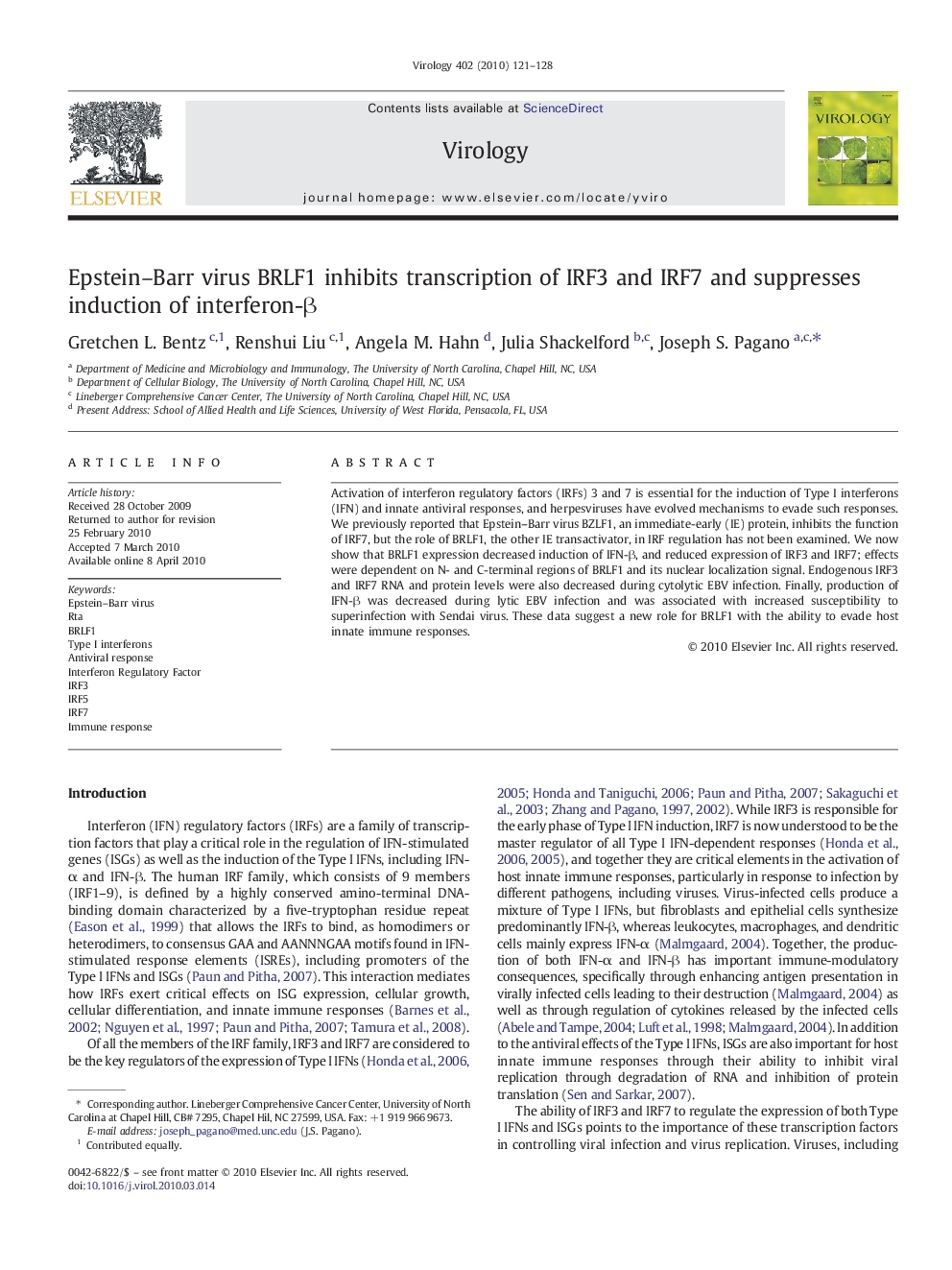| Article ID | Journal | Published Year | Pages | File Type |
|---|---|---|---|---|
| 3424973 | Virology | 2010 | 8 Pages |
Activation of interferon regulatory factors (IRFs) 3 and 7 is essential for the induction of Type I interferons (IFN) and innate antiviral responses, and herpesviruses have evolved mechanisms to evade such responses. We previously reported that Epstein–Barr virus BZLF1, an immediate-early (IE) protein, inhibits the function of IRF7, but the role of BRLF1, the other IE transactivator, in IRF regulation has not been examined. We now show that BRLF1 expression decreased induction of IFN-β, and reduced expression of IRF3 and IRF7; effects were dependent on N- and C-terminal regions of BRLF1 and its nuclear localization signal. Endogenous IRF3 and IRF7 RNA and protein levels were also decreased during cytolytic EBV infection. Finally, production of IFN-β was decreased during lytic EBV infection and was associated with increased susceptibility to superinfection with Sendai virus. These data suggest a new role for BRLF1 with the ability to evade host innate immune responses.
